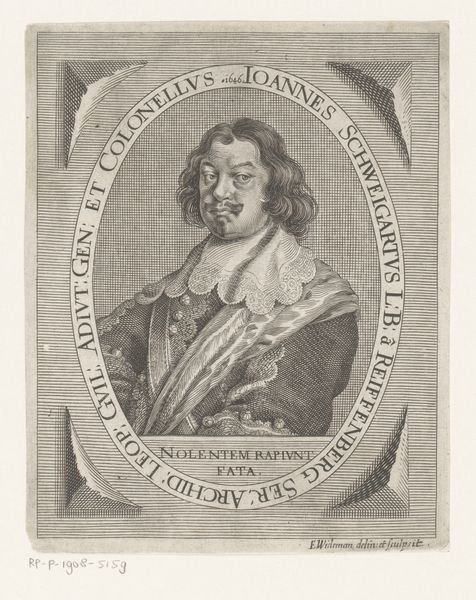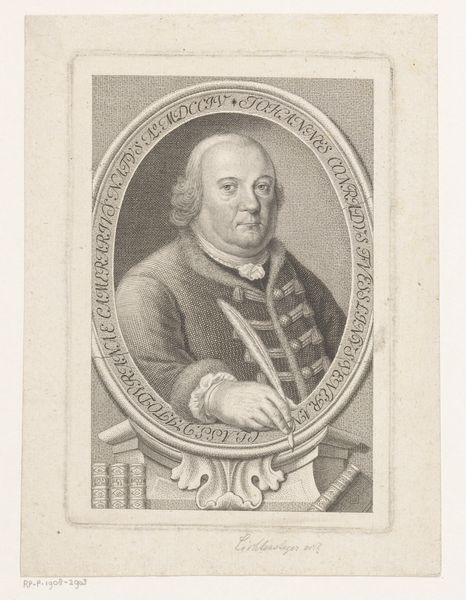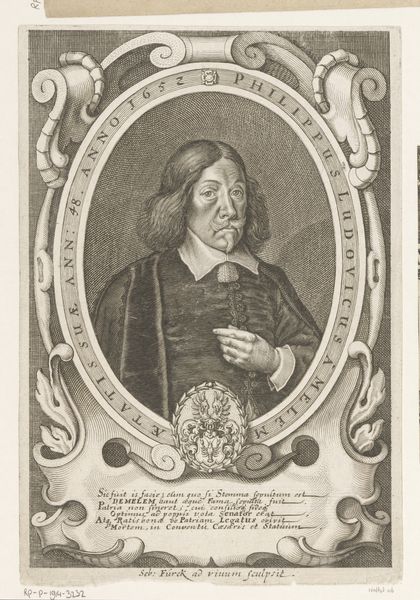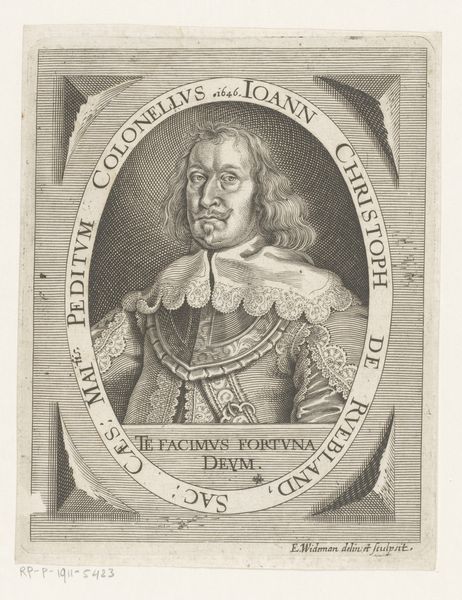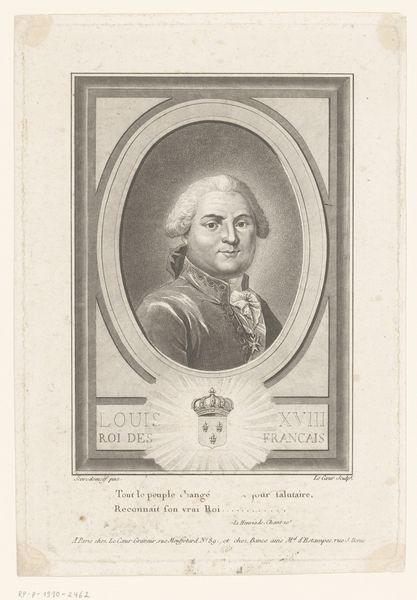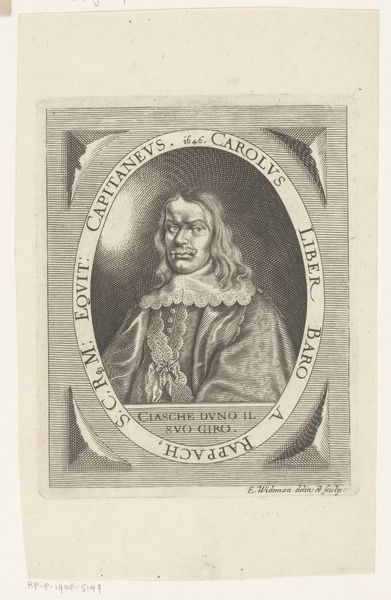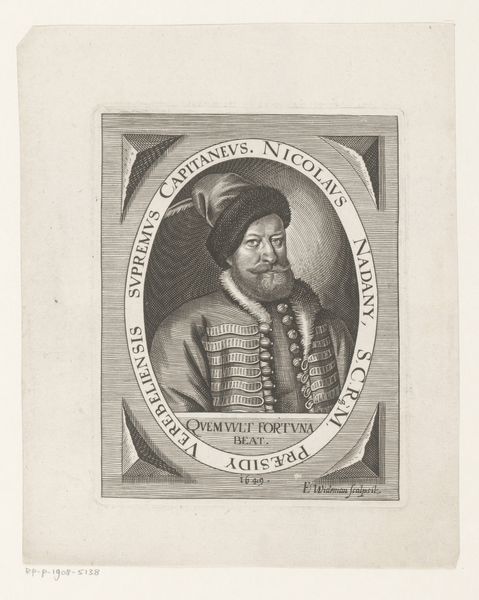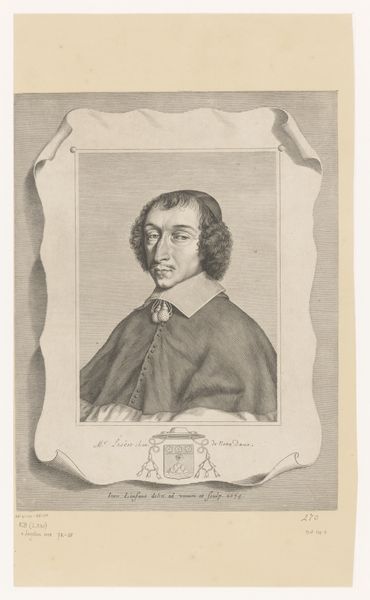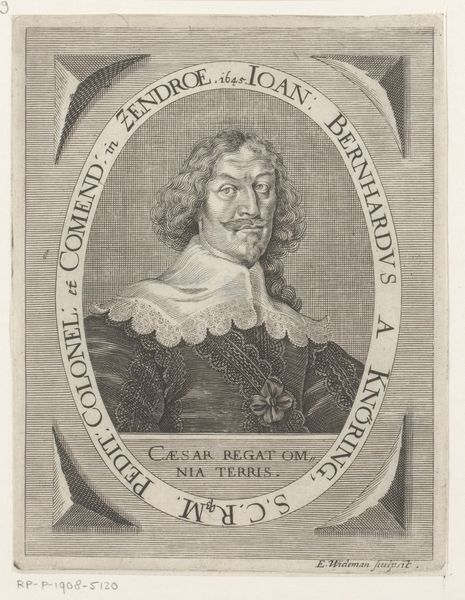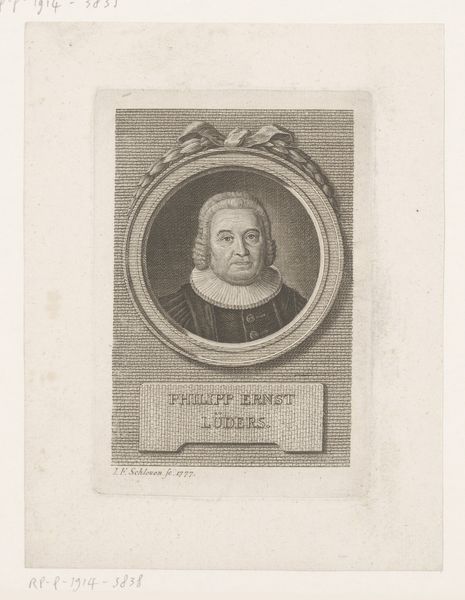
print, engraving
#
portrait
#
baroque
# print
#
old engraving style
#
engraving
Dimensions: height 149 mm, width 119 mm
Copyright: Rijks Museum: Open Domain
Curator: The Rijksmuseum holds a fascinating print by Elias Widemann, dating back to 1644. It's entitled "Portret van Petar Rajković." Editor: He looks so…resolute! There's a firmness to the set of his mouth and eyes. What strikes me most is how elaborately he's dressed, covered in buttons and braided toggles. What does that communicate, beyond wealth? Curator: His clothing absolutely speaks to status. Widemann depicted Rajković as a military figure, judging by his garments. In this period, portraits of military men reinforced state power and masculine ideals, contributing to the public image of authority. Editor: Absolutely. I also can’t ignore the Latin inscription around his portrait. "Non cogito de Crastino." "I do not think about tomorrow.” What kind of statement is that, memorialized around his image like that? Almost hedonistic. Curator: Yes, that's interesting because it seems contradictory in light of his obvious power and social role. It seems an odd choice to frame the leader with words suggesting an embrace of a life in the moment, detached from future concerns. Maybe this was designed to subtly reinforce the subject’s personal courage in battle? Editor: Perhaps. Or maybe to offset the visual pomp? By including the saying Widemann is grounding him. Curator: It is interesting how Widemann, as the printmaker, shapes Rajković’s public image. He isn’t simply rendering Rajković but actively interpreting him for a specific audience. Consider where prints like this circulated—how they informed societal perceptions of figures like Rajković within larger power structures. Editor: So true. The medium becomes a crucial element in this story, as the work can be distributed more broadly. We are not just examining a single portrait but its potential impact. These symbols and ideas would circulate widely, thus reinforcing prevailing social ideals, especially regarding military command and personal philosophies. Curator: Exactly. Studying art isn't solely about aesthetics, it involves understanding art as an element that both influences and reflects its historical context. Editor: And seeing how these embedded codes of symbols operate is how meaning is truly constructed and then reinforced through history.
Comments
No comments
Be the first to comment and join the conversation on the ultimate creative platform.
